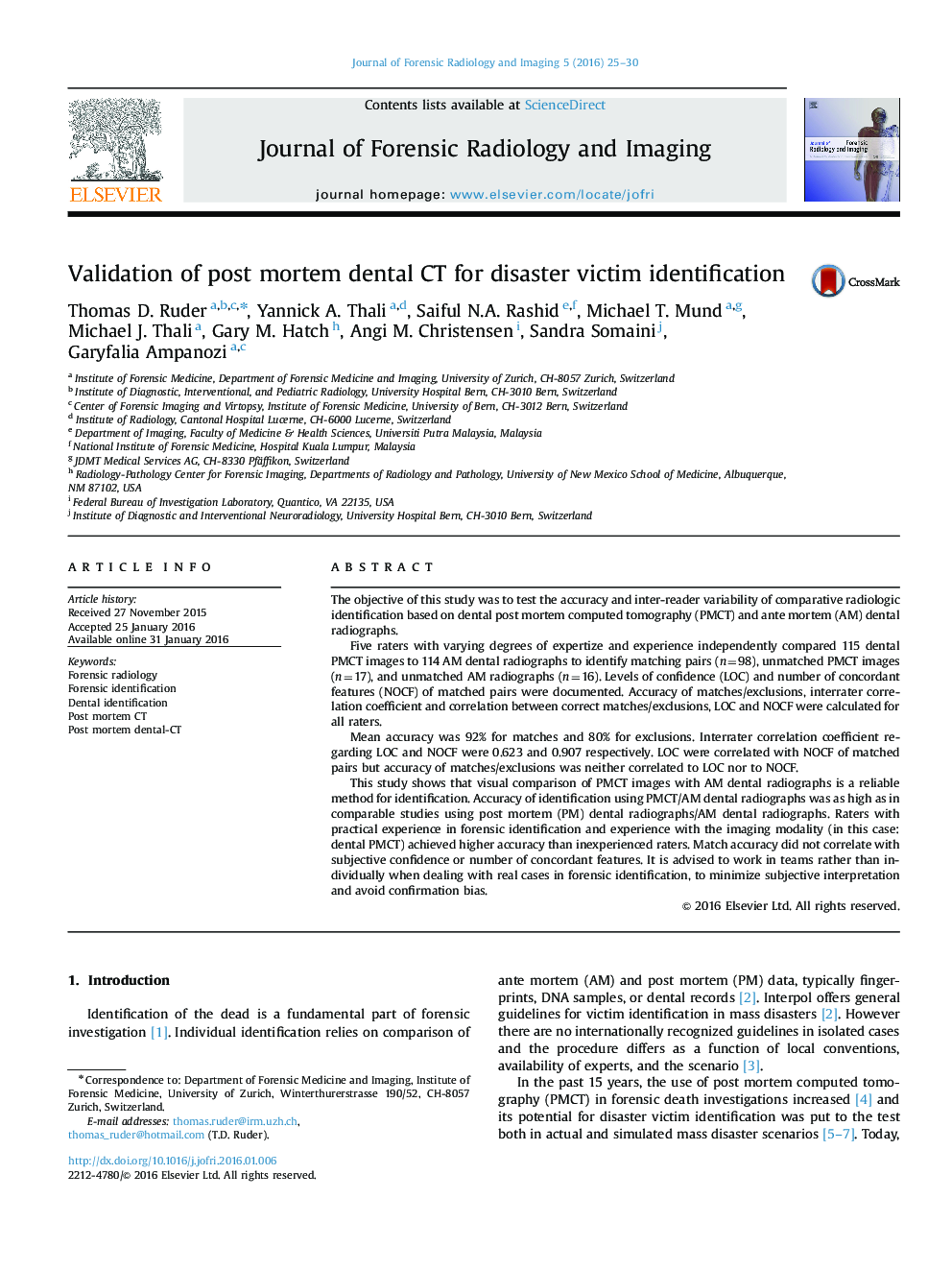| کد مقاله | کد نشریه | سال انتشار | مقاله انگلیسی | نسخه تمام متن |
|---|---|---|---|---|
| 103113 | 161363 | 2016 | 6 صفحه PDF | دانلود رایگان |
• Comparison of PMCT with AM dental radiographs is a reliable method of identification.
• Practical experience with forensic identification increases number of matches.
• Experience with imaging modality (here: PMCT) reduces number of false matches.
• Team work can minimize subjective interpretation and confirmation bias in DVI.
The objective of this study was to test the accuracy and inter-reader variability of comparative radiologic identification based on dental post mortem computed tomography (PMCT) and ante mortem (AM) dental radiographs.Five raters with varying degrees of expertize and experience independently compared 115 dental PMCT images to 114 AM dental radiographs to identify matching pairs (n=98), unmatched PMCT images (n=17), and unmatched AM radiographs (n=16). Levels of confidence (LOC) and number of concordant features (NOCF) of matched pairs were documented. Accuracy of matches/exclusions, interrater correlation coefficient and correlation between correct matches/exclusions, LOC and NOCF were calculated for all raters.Mean accuracy was 92% for matches and 80% for exclusions. Interrater correlation coefficient regarding LOC and NOCF were 0.623 and 0.907 respectively. LOC were correlated with NOCF of matched pairs but accuracy of matches/exclusions was neither correlated to LOC nor to NOCF.This study shows that visual comparison of PMCT images with AM dental radiographs is a reliable method for identification. Accuracy of identification using PMCT/AM dental radiographs was as high as in comparable studies using post mortem (PM) dental radiographs/AM dental radiographs. Raters with practical experience in forensic identification and experience with the imaging modality (in this case: dental PMCT) achieved higher accuracy than inexperienced raters. Match accuracy did not correlate with subjective confidence or number of concordant features. It is advised to work in teams rather than individually when dealing with real cases in forensic identification, to minimize subjective interpretation and avoid confirmation bias.
Journal: Journal of Forensic Radiology and Imaging - Volume 5, June 2016, Pages 25–30
